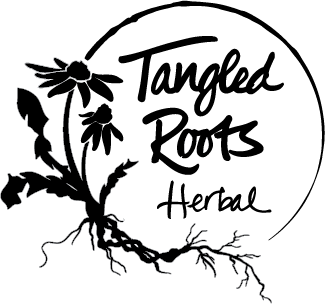As you embark on your journey into the world of herbal medicine, one term you'll come across frequently is "herbal energetics."
This age-old concept plays a pivotal role in understanding how herbs affect the body and mind. In this blog post, we'll demystify herbal energetics and provide examples to help you grasp and apply this vital knowledge.
What are Herbal Energetics?
At its core, herbal energetics refers to the properties or qualities of herbs. These properties can be seen as the energy or vibration an herb carries, which has an effect on the human body's own energy when consumed.
The Four Basic Energetics
Essentially, there are four primary energetics that are typically associated with herbs:
-
Hot/Cold: This refers to the temperature sensation of the herb. For instance, cayenne pepper is "hot," promoting circulation and warmth, while peppermint is "cold," offering a cooling sensation.
-
Wet/Dry: This concerns the moisture content. Marshmallow root is "wet," being moisturizing and soothing, whereas sage is "dry," which can help reduce excessive moisture and mucus.
-
Tonic/Relaxant: Tonics like ginseng can invigorate and strengthen the body, while relaxants like chamomile help to calm and soothe.
-
Nutritive/Poisonous: Nutritive herbs like nettle provide nourishment, whereas some herbs can be toxic in large amounts, serving as powerful medicines in small, controlled doses.
Application to the Whole Person
When we say "whole person," we are referring to the intricate balance of physical, emotional, and mental states of an individual. Herbal energetics can influence all these aspects:
-
Physical: An herb's energetics can aid in balancing physical imbalances, like using "cold" herbs to cool down an overheated body.
-
Emotional: Herbs can influence emotional states. For instance, "relaxant" herbs can alleviate anxiety or stress.
-
Mental: Certain herbs can sharpen the mind or induce calmness, influencing our cognitive processes.
Tissue States and Herbal Energetics
In herbalism, there's a concept of tissue states which describes the condition or health of tissues in the body. For example:
- Hot tissue state might manifest as inflammation or fever, and could be balanced with "cold" energetics.
- Damp tissue state may be seen in edema or mucus build-up and can be addressed with "dry" energetics.
Understanding tissue states helps herbalists match the right herbs to the current condition of the body.
Energetics of Herbs Themselves
Each herb carries its unique energy. Here are a few examples:
- Ginger (Zingiber officinale): A warming herb, ginger is excellent for cold conditions, aiding in circulation and warming the body.
- Elderflower (Sambucus nigra): This herb has a drying effect, beneficial for damp conditions like colds with a runny nose.
- Lavender (Lavandula angustifolia): Known as a calming herb, lavender can relax the mind and ease anxiety.
As you delve deeper into herbalism, understanding herbal energetics becomes invaluable. It helps make sense of how each herb affects the body, mind, and emotions. By learning to match the energetics of herbs with the needs of the individual, you'll be equipped to harness the true potential of plant medicine.
Happy herbal learning!



Comments
Thank you for providing such a comprehensive and practical guide. Your blog has become a valuable resource for me, and I’m sure it will help many others on their journey to better manage High cholesterol. Looking forward to more insightful content from you.
Wonderful information! Thank you for sharing.
Kat